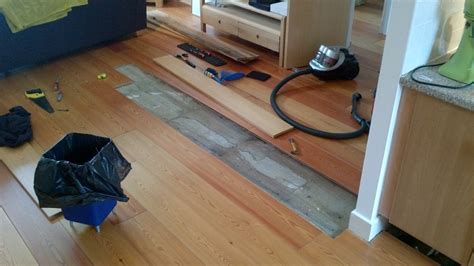Effortless Warped Floorboard Repair: A Step-by-Step Guide
Warped floorboards are a common problem, often unsightly and potentially causing tripping hazards. But don't despair! Fixing warped floorboards doesn't require extensive construction skills or expensive tools. This comprehensive guide provides a step-by-step approach to repairing warped floorboards, leaving your floors looking their best. We'll cover various causes and solutions, ensuring you have the knowledge to tackle this home improvement project with confidence.
Understanding Why Floorboards Warp
Before diving into repairs, understanding the root cause of warping is crucial. This allows for a more effective and lasting solution. Several factors can contribute to warped floorboards:
- Moisture: This is the most frequent culprit. Excessive moisture from leaks, high humidity, or inadequate ventilation can cause wood to expand and warp.
- Improper Installation: Poorly installed floorboards, lacking sufficient spacing or inadequate fastening, are prone to warping.
- Age and Wear: Over time, wood naturally expands and contracts, increasing the risk of warping, especially with older floors.
- Sun Exposure: Direct sunlight can cause uneven drying and warping of floorboards.
How to Identify Warped Floorboards
Identifying warped floorboards is usually straightforward. Look for:
- Visible Gaps: Noticeable gaps between boards indicate expansion and warping.
- Uneven Surfaces: Feel the floor for high or low spots, indicating warping.
- Cupping or Crowning: Cupping refers to the edges of the board rising, while crowning is a hump in the center.
Repairing Minor Warps: The Simple Solutions
For minor warps, you can often achieve satisfactory results with simple methods:
1. Increasing Humidity (for shrinking): If your home is too dry, the wood might shrink to correct the warp. Consider using a humidifier to increase humidity levels gradually.
2. Decreasing Humidity (for swelling): If your home is too humid, address leaks and improve ventilation to reduce moisture. A dehumidifier can be helpful.
3. Re-fastening Loose Boards: If the warping is due to loose nails or screws, re-fastening them can often solve the problem. Use appropriate-sized nails or screws to avoid further damage.
4. Using a Damp Cloth: For minor cupping, try applying a slightly damp cloth to the raised edges. The wood will absorb moisture, potentially leveling it out over time. Remember to monitor this closely and let the area air dry properly, to prevent excessive moisture.
Addressing More Significant Warping
For more significant warping, more involved methods are necessary:
How to Repair Severely Warped Floorboards?
Severe warping usually requires replacing the affected boards. This involves:
- Removing the Warped Board: Carefully pry up the warped board using a pry bar or crowbar, protecting surrounding boards from damage.
- Preparing the Subfloor: Inspect the subfloor for any damage and repair it accordingly.
- Installing a Replacement Board: Ensure the replacement board is appropriately sized and cut. Secure it with nails or screws.
- Sanding and Finishing: After installation, sand the new board to match the surrounding floor and finish with an appropriate sealant.
Note: Always use safety precautions when working with tools. Wear protective eyewear and gloves.
What Causes Cupping in Wood Flooring?
As mentioned earlier, moisture is the most significant cause of cupping. Uneven moisture content in the wood causes it to expand and contract unevenly, leading to the edges of the board rising. Poor installation or insufficient acclimation of the wood before installation can also contribute.
How Do I Fix a Cupped Wood Floor?
Minor cupping can sometimes be corrected by addressing moisture issues in the house. For more severe cupping, replacing the affected boards is usually the most effective solution.
Can I Fix a Warped Floorboard Without Replacing It?
In cases of minor warping, you may be able to fix it without replacement by re-fastening loose boards or addressing moisture issues. For moderate to severe warping, however, replacement is usually the only viable solution for a lasting repair.
Conclusion
Repairing warped floorboards is a manageable task, with various solutions depending on the severity of the problem. By understanding the causes and following the steps outlined above, you can restore the beauty and functionality of your floors, avoiding costly professional repairs. Remember to prioritize safety and take your time. With a little patience and the right approach, you can achieve effortless warped floorboard repair.

